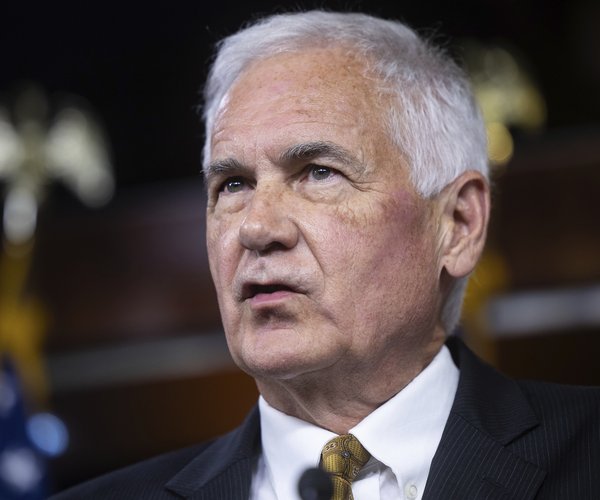“If future generations are to remember us with gratitude rather than contempt, we must leave them more than the miracles of technology. We must leave them a glimpse of the world as it was in the beginning, not just after we got through with it.” — President Lyndon B. Johnson (while signing the 1964 Wilderness Act)
So who had the original sin in California water development — Los Angeles or the San Joaquin Valley?
While LA’s campaign — devious or otherwise — of snapping up almost all of the Owens Valley groundwater rights and diverting eastern Sierra streams to the point that it dried up Owens Lake that covered 17.5 miles long and 10 miles wide with a depth up to 3 feet until 1913, is still part of California’s water war narrative today, Tulare Lake doesn’t even rate a whisper.
Tulare Lake up until the late 19th century was the second largest freshwater lake entirely in the United States. In 1879, it covered 690 square miles. It was located roughly at the mid-point between what is today a triangle formed by Hanford, Coalinga, and Delano. In a touch of irony, the California Aqueduct runs along what was once its western shore. The demise of Tulare Lake was complete by 1955.
So, what killed Tulare Lake? Its tributaries — the Kern, Kings, Tule, White, and Kaweah rivers — all had dams built on their headwaters to divert water for agriculture and municipal uses.
Before anybody in Los Angeles or San Francisco — the home-base of the Sierra Club that destroyed the Hetch Hetchy Valley in Yosemite National Park by building a dam the old-fashioned way by cutting a deal with Congress in exchange for $30,000 a year payments — gets smug and condemns agriculture for Tulare Lake’s demise, they need to have a reality check.
The reason large tracts of the San Joaquin Valley were needed for farming is because places like Los Angeles can’t grow the food they need to support the population they have. Just like LA needs more and more water to keep their economy growing, they also need more and more food.
The San Joaquin Valley is the world’s most productive farm region with other 250 different crops. It generates 12.8 percent of the nation’s agricultural production and more than 65 percent of its fruit, 52 percent of its nuts, and the vast majority of the 44 percent of the nation’s vegetable production that is credited to California.
One can’t take nutritious bites out of Cupertino produced Apples. Nor is it wise to become dependent on foreign land for our food.
The bottom line is simple. LA can ill afford to “starve” San Joaquin Valley agriculture of water. Yet that is exactly what the Twin Tunnels — the 21st century answer to the Los Angeles Aqueduct — will do.
So far government bureaucrats at a handful of federal agencies have declared the Twin Tunnels will do no harm. But keep in mind government bureaucrats said the same thing about the Los Angeles Aqueduct, converting the Los Angeles River into a glorified canal, diverting massive water from the Colorado River, building the Three Mile Island nuke plant in Pennsylvania and its kissing cousin Rancho Seco south of Sacramento, and a host of other environmental altering public works projects undertaken in the name of not just keeping metropolitan urban growth booming but to do so in the cheapest manner possible by commandeering assets hundreds upon hundreds of miles away.
The Twin Tunnel plan — contrary to what LA water gurus may think — will alter yet another water basin. This time it is the San Joaquin-Sacramento Delta. Besides being a key estuary on the Pacific Flyway, the Delta has a unique ecosystem that vacillates naturally between feast and famine when it comes to freshwater inflows. The OKs from the federal bureaucrats do not take into account scientific research by government financed climatologists that make a solid case that the last 150 or so years in California has been an aberration of sorts when it comes to weather. Prolonged droughts — longer than what we just experienced — are the norm. And those are punctuated by torrential precipitation that makes the snow fall and rain of this year seem like drought conditions by comparison.
By not allowing the water flowing from the Sacramento River do what nature intended it to do in the Delta before being pumped into the California Aqueduct near Tracy and sent south to LA, it will set the stage for disaster especially in drought years. It will increase and prolong salinity beyond natural cycles.
The state has already advanced a solution for this eventuality even though they are careful not to admit it will happen in rhetoric penned to justify the Twin Tunnels. The state wants to commandeer 360,000-acre feet of water from the Stanislaus, Merced, and Tuolumne rivers for improved fish flows. In exchange, roughly 240,000 acres of farmland would be permanently fallowed in the 209 region. Some 3,000 jobs would vanish and the annual losses of San Joaquin, Stanislaus, and Merced counties will hit $260 million a year. That’s what the state anticipates. And we know how the state low balls things.
Sacramento will need to come up with a way to replace fresh water that fish and the Delta ecosystem need that the Twin Tunnels will divert under the Delta for LA.
This will not create another drop of available water but it will assure LA won’t have to suffer as much as the rest of the state during droughts.
And LA water experts are well aware that prolonged droughts are commonplace in California’s climate history.
Draining the Delta like Owens & Tulare lakes






